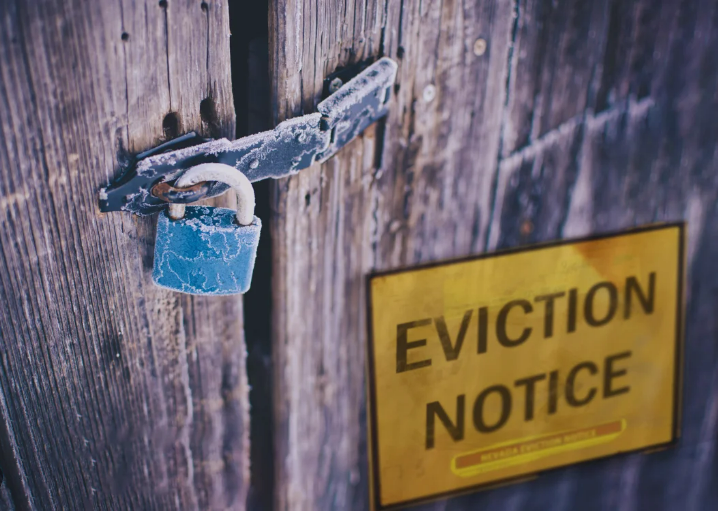What is a Fixed-Rate HELOC?


You might be familiar with how a home equity line of credit (HELOC) works: it’s a revolving line of credit with a variable interest rate, similar to a credit card. This is your typical HELOC. However, there’s a less common option: a fixed-rate HELOC. With this type, the interest rate can be locked in, ensuring that your payments remain consistent.
Here’s an overview of how a fixed-rate HELOC works and how it differs from a traditional home equity line of credit.
What is a fixed-rate HELOC?
If a standard HELOC is akin to a large credit card, a fixed-rate HELOC is more like a second mortgage. It’s actually a hybrid of a home equity loan (which provides a lump sum at a fixed rate) and a home equity line of credit. This type of HELOC allows you to lock in a portion or all of your balance at a fixed interest rate, shielding you from market fluctuations.
With a fixed-rate HELOC, you can withdraw as much or as little of your credit line as needed, just like with a variable-rate HELOC. However, unlike a variable-rate HELOC, the interest rate on any amount you use will remain constant throughout the draw period.
If your HELOC lender offers a fixed-rate option, you can usually make the conversion at closing or during the draw period, says Laura Sterling, vice president of Marketing at Georgia’s Own Credit Union. Locking in a fixed interest rate can provide the stability of predictable monthly payments.
The fixed-rate portion of the HELOC can be locked in for terms ranging from five to 30 years, during which time the loan is paid back like a typical mortgage, says Joe Perveiler, home lending product executive at PNC Bank.
Pros and cons of a fixed-rate HELOC
As with any financial product, a fixed-rate HELOC has both advantages and disadvantages. Here are some key points to consider.
Pros of a Fixed-Rate HELOC
- Avoid Interest Rate Fluctuations: Protects you from rising interest rates.
- Stable and Predictable Repayments: Ensures consistent monthly payments.
- Potential to Lock in Interest Rate Declines: Allows you to secure lower rates if market conditions are favorable.
Cons of a Fixed-Rate HELOC
- Higher Initial Interest Rate: May start with a higher interest rate compared to a traditional HELOC.
- More Fees and Penalties: Can come with additional costs.
- Limited Availability: Not all lenders offer fixed-rate HELOCs, making them harder to find.
Fixed- vs. variable-rate HELOC
A variable-rate HELOC introduces some uncertainty when planning your monthly household budget, while a fixed-interest HELOC provides stable, predictable payments. This stability can be a significant advantage for homeowners who prefer a consistent repayment schedule.
However, there are downsides to consider. Fixed-rate HELOCs typically come with higher initial interest rates compared to traditional variable-rate HELOCs, according to Sterling. Essentially, you’re paying extra for the security of a stable rate. Additionally, fixed-rate HELOCs might have higher origination and maintenance fees.
Generally, both types of HELOCs offer similar terms regarding the length of the draw and repayment periods. However, fixed-rate HELOCs might impose borrowing limits that aren’t present with variable-rate HELOCs. While the predictability of a fixed-rate HELOC can be appealing, it’s important to weigh the potential extra costs and borrowing restrictions against the benefits of stable payments.
What are the typical terms for a fixed-rate HELOC?
As with any home equity loan or line of credit, the interest rate on your fixed-rate HELOC will depend on your credit score and current market conditions.
Typically, lenders allow you to lock in a fixed interest rate on some or all of the balance of your HELOC at any point during the draw period. However, they may limit the number of times you can do this. For example, US Bank permits customers to have up to three fixed-rate balances simultaneously. Additionally, some lenders require a minimum balance to switch to a fixed rate; at Bank of America, this minimum is $5,000.
Depending on your lender, you might be able to lock the rate yourself through your online account, or you may need to contact a representative to make the switch.
Factors to consider with a fixed-rate HELOC

Inflation/interest rate moves
In terms of inflation, opting for a fixed-rate HELOC could be a smarter move. This is because, regardless of economic fluctuations, inflation, or changes in interest rates, a fixed-rate HELOC provides the security of consistent payments.
For example, the Federal Reserve raised its key lending rate throughout 2022 and 2023 to combat inflation. This led to higher interest rates on variable-rate financial products, including HELOCs, which surpassed 10 percent in late 2023. As of 2024, rates have begun to come down somewhat, with the national average for HELOCs around 9 percent.
However, this strategy works best when interest rates are rising. If market rates drop, you might not be able to easily convert back to a variable rate and reduce your payments. The bottom line: consider your budget and risk tolerance when deciding.
Purpose of the HELOC
A fixed-rate HELOC can be especially advantageous if you’re using it for home improvements. It eliminates the pressure to make draws and start remodeling before interest rates rise.
“Establishing a fixed-rate lock on a HELOC can often make sense when a customer has a planned expense they need to finance, such as a home renovation project,” says Perveiler. “In that scenario, the customer will have full certainty about the cost of their financing.”
Additionally, a fixed-rate HELOC can be useful in emergencies, such as unexpected medical bills, or for consolidating debt.
Cost and fees
While a fixed-rate HELOC provides budget certainty, there’s no predicting future interest rate changes. If rates drop, you might find a variable-rate line of credit would have been more beneficial.
There could also be hidden fees, such as penalties for early repayment or charges for converting to a fixed rate.
“Borrowers may want to look out for annual fees and rate locks,” says Sterling. “Some lenders cap the number of fixed-rate locks a borrower can do annually and may charge a fee for each rate lock. Borrowers should also be aware of minimum withdrawal amounts.”
Minimum borrowing requirements
Some lenders impose a minimum outstanding balance on the line of credit before you can secure a fixed rate. This requirement might not align with your budget, potentially compelling you to borrow more than necessary.
Additionally, there may be limits on how often you can switch from a variable rate to a fixed rate.
Why aren’t all HELOC rates fixed?
The traditional variable-rate HELOC has long been the most common type, with interest rates fluctuating based on broader economic trends, including the benchmark rates set by the Federal Reserve.
However, as lenders seek to provide consumers with cost-saving options in the current high-interest environment, fixed-rate HELOCs are becoming more prevalent. These products offer stability and protection against rising rates. For instance, Guaranteed Rate introduced a fixed-rate HELOC to its offerings in 2022, reflecting this shift in strategy.
Can I convert an existing HELOC to a fixed rate?
If you have a variable-rate HELOC and wish to switch to a fixed rate, there are a couple of options available:
- Open a New HELOC: The easiest way to secure a fixed-rate HELOC is to take out a new one, whether it’s a fixed-rate product or a hybrid that allows for conversion. This approach is particularly beneficial if you’re approaching the end of the draw period on your current HELOC.
- Refinance Your Existing HELOC: By opening a new hybrid HELOC, you can refinance your current one. This means you’ll pay off the balance of the old HELOC with funds from the new line of credit, which also resets your draw period. For instance, Bethpage Federal Credit Union provides a unique option to convert part or all of a variable-rate HELOC into a fixed-rate loan at no fee, with repayment terms of five, 10, or 20 years.
Can I convert a fixed-rate HELOC to a variable-rate HELOC if rates drop?
When interest rates decline, a variable-rate HELOC can be appealing and potentially more advantageous than a fixed-rate option. If you’ve already switched from a variable to a fixed rate, “some lenders may permit the borrower to revert back to a variable rate later,” notes Sterling. This flexibility allows you to benefit from lower interest rates when they arise.
If switching back isn’t an option, refinancing your HELOC could be a solid alternative.
Is a fixed-rate HELOC best for me?
Whether you’re planning a home renovation or facing a large unexpected expense, it’s essential to evaluate both variable-rate and fixed-rate HELOC options to find the best fit for your situation. Each type has its advantages, so consider your specific needs. Here are some key questions to guide your decision:
- What is the current interest rate environment? “If rates are rising, a fixed-rate HELOC may be a wise choice,” advises Sterling. “Conversely, if you expect rates to stay low, a traditional HELOC might offer greater savings.”
- Do you have a specific borrowing amount in mind? If you’re looking to pay off a student loan or finance a significant home improvement, fixed-rate HELOCs may provide more flexibility. However, some lenders impose minimum borrowing requirements to lock in a fixed rate.
- Are you comfortable with potentially fluctuating payments? “If not, a fixed-rate HELOC could be ideal,” says Sterling. If you are okay with variable payments, a traditional HELOC might suit you well, but be sure to plan for potential increases, especially as your repayment period begins.








